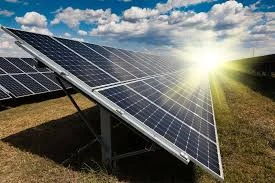10kW On-Grid Solar Inverter - Efficient & Reliable Solar Power Solutions
Understanding On-Grid Solar Inverters A Comprehensive Guide to 10kW Systems
In the age of renewable energy, solar power stands out as one of the most economically viable and environmentally friendly energy sources. Among the key components in a solar energy system is the inverter, which plays a critical role in converting the direct current (DC) generated by solar panels into alternating current (AC) used in our homes and businesses. In this article, we will delve into the features and benefits of on-grid solar inverters, particularly focusing on the 10kW capacity systems.
What is an On-Grid Solar Inverter?
An on-grid solar inverter, also known as a grid-tied inverter, is designed to work in conjunction with the local electricity grid. Unlike off-grid systems, which operate independently and require batteries for energy storage, on-grid systems allow excess energy generated during the day to be fed back into the grid. This capability not only enhances energy efficiency but also enables homeowners to earn credits or monetary compensation through net metering programs.
The 10kW Capacity Who is it For?
A 10kW solar inverter is suitable for medium to large-sized residential properties or small commercial buildings. Typically, this capacity can generate approximately 40-50 kWh per day under optimal sunlight conditions, which can cover the electricity needs of a household that consumes between 800 to 1,200 kWh per month. This makes a 10kW system ideal for families looking to significantly reduce their electricity bills and carbon footprint.
Key Features of 10kW On-Grid Solar Inverters
1. Efficiency Modern 10kW inverters boast high efficiency rates, often ranging between 95% and 99%. This means that a minimal amount of energy is lost during the conversion process, maximizing the power available for use.
on grid solar inverter 10kw

2. Monitoring Capabilities Many on-grid inverters come equipped with advanced monitoring systems that allow users to track their energy production and consumption in real time. This data can help homeowners optimize their energy usage and identify any potential issues with their solar system.
3. Compatibility with Solar Panels On-grid solar inverters are designed to work seamlessly with a variety of solar panel types and brands. This versatility allows homeowners to choose the best solar panels that fit their budget and efficiency needs.
4. Safety Features High-quality inverters include built-in safety mechanisms such as anti-islanding protection, which ensures that the inverter shuts down in the event of a power outage. This feature protects both the inverter and grid workers during maintenance.
5. Compact Design With advancements in technology, many 10kW inverters have become more compact and easier to install, saving valuable space in residential settings.
Economic and Environmental Benefits
Investing in a 10kW on-grid solar inverter provides both financial and environmental benefits. By generating their own electricity, homeowners can reduce or eliminate their energy bills, leading to substantial long-term savings. Additionally, each kilowatt-hour of solar energy used translates to fewer carbon emissions, contributing to a cleaner environment.
Conclusion
On-grid solar inverters, particularly those with a 10kW capacity, represent a significant advancement in the quest for sustainable energy solutions. By harnessing the power of the sun, homeowners can not only enjoy reduced energy costs but also contribute positively to the environment. As the technology continues to evolve, the adoption of solar energy systems will undoubtedly play a pivotal role in shaping a more sustainable future for generations to come.
-
String Solar Inverter: The High-Efficiency Solution for Smart Solar EnergyNewsJul.14,2025
-
Revolutionizing Rooftop Energy with the Power of the Micro Solar InverterNewsJul.14,2025
-
Power Independence with Smart Off Grid Solar Inverter SolutionsNewsJul.14,2025
-
On Grid Solar Inverter: Powering the Future with Smart Grid IntegrationNewsJul.14,2025
-
Monocrystalline Solar Panels: High-Efficiency Power for the Future of Clean EnergyNewsJul.14,2025
-
Bifacial Solar Panel: A Smarter Investment for Next-Generation Energy SystemsNewsJul.14,2025







